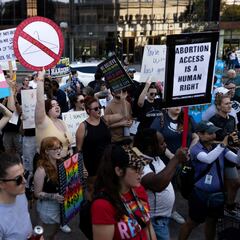How abortion laws have changed since Donald Trump won election
Donald Trump’s victory in the 2024 presidential election has reignited concerns about the future of abortion rights in the United States.


Alongside votes for president, governor, and the legislative and executive branches, voters could also have their say onother measures affecting state constitutions.
Ten states had abortion on the ballot last Tuesday, with all votes being massively consequential for the ocntinued rights of women. Since the overturning of the Roe v. Wade precedent in 2022, 21 states had either tightening restrictions or banning abortion in almost all circumstances. These votes gave citizens the right to push back.
These states are:
- Arizona
- Colorado
- Florida
- Maryland
- Missouri
- Montana
- Nebraska
- Nevada
- New York
- South Dakota
While states have pushed against abortion access, the public as a whole is massively in support of it. 63% of Americans say it should be legal in all or most cases, comapred to just 36% saying the opposite. This has forced Republicans to backtrack from calling for nationwide abortion bans, instead leaving it out from the electoral discussion.
Arizona
Voters passed a constitutional amendment guaranteeing abortion access.
Colorado
Residents voted in favor of a proposal to embed reproductive rights safeguards within the state’s constitution.
Florida
Voters needed to hit 60% of support to enshrine abortion protections in the state constitution, but could only hit 57%. This means the six-week abortion limit is still in place.
Maryland
The passed vote makes abortion access harder to overturn in future.
Missouri
The state will overturn laws to that restrict abortion at any time.
“This is only the first step to realizing and fully implementing the protections of Amendment 3. It’s certainly not the last step,” said Richard Muniz, interim president and CEO of Planned Parenthood Great Rivers.
Montana
The public approved a measure to incorporate reproductive rights protections into the state constitutio
Nebraska
The electorate chose to maintain the existing 12-week abortion restriction, going against an expanded 24-week allowance.
Nevada
Citizens initiated the process of enshrining abortion protections in their state’s constitution.
New York
Related stories

Donald the Democrat and Ivanka funding Kamala

Which 10 states are voting on abortion rights this election?
Voters endorsed a constitutional amendment aimed at safeguarding the current level of abortion access in the state.
South Dakota
Voters rejected abortion acces,, meaning it is only allowed in the case of saving the mother’s life.
Complete your personal details to comment